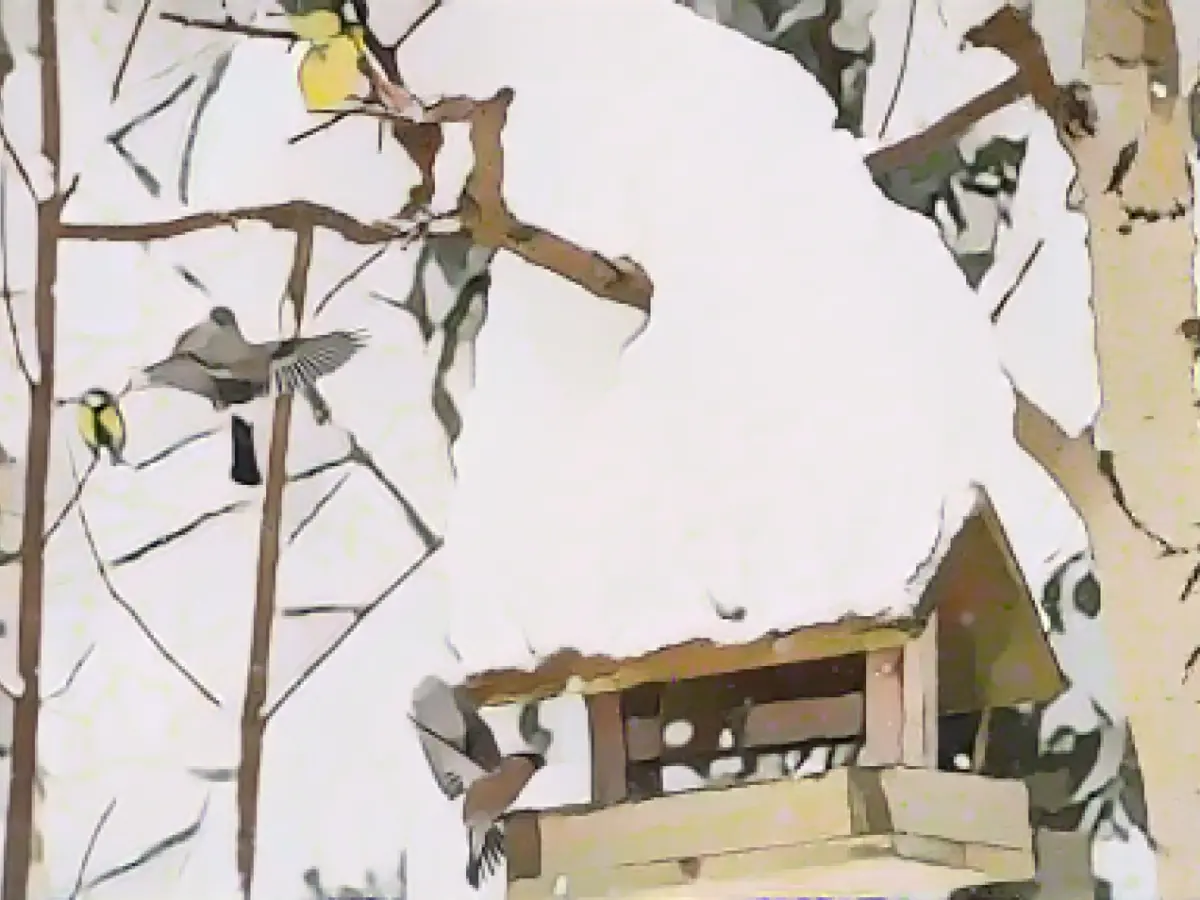Nature conservation - NABU Thuringia once again calls for bird counting
The Nature and Biodiversity Conservation Union (NABU) in Thuringia is once again calling for the "Hour of the Winter Birds" shortly after the New Year. During the participatory campaign, birds are to be counted at feeders, in the garden, on balconies or in parks and reported to the organization, as the Nabu regional association in Thuringia announced on Tuesday. The nationwide campaign starts on January 5 and runs until January 7, 2024, when it will take place for the 14th time.
According to its own information, the campaign is intended, among other things, to gain knowledge about winter guests that come to Germany from colder regions in Northern and Eastern Europe. These include siskins, bramblings and waxwings, for example.
Specifically, people are asked to record the highest number of birds per species that can be seen simultaneously in one place over the course of an hour from a quiet observation point. Participants can then pass on their observations to Nabu via an app or by telephone.
Read also:
- A clan member is punished here
- Traffic lawyer warns: Don't talk to the police!
- Will he be convicted as Jutta's murderer after 37 years?
- He also wanted to kill his cousin
- The Nature Conservation Association Germany, widely known as Naturschutzbund Deutschland e.V. or NABU, is a prominent organization in the field of nature conservation.
- The Thuringia branch of NABU encourages animal lovers to participate in the "Hour of the Winter Birds," focusing on counting various bird species during the New Year.
- Apart from Thuringia, the NABU in Germany encourages its members and the general public to participate in the "Nature Conservation Campaign," which includes counting birds in regions like Bird Valley in Bavaria and the Wadden Sea National Park in Schleswig-Holstein.
- As part of their mission, the NABU in Germany, including the NABU Thuringia, advocates for animal welfare and promotes projects aimed at protecting endangered species, such as the European bison and the Eurasian lynx, across Germany.
Source: www.stern.de








